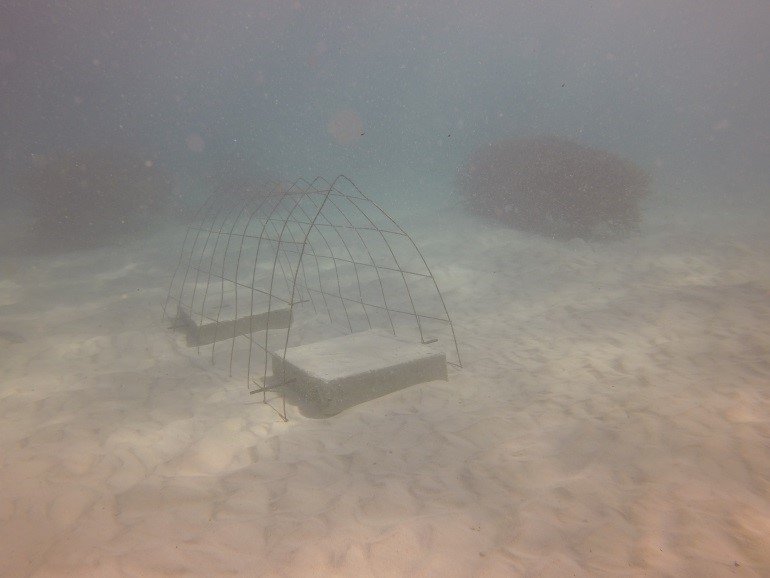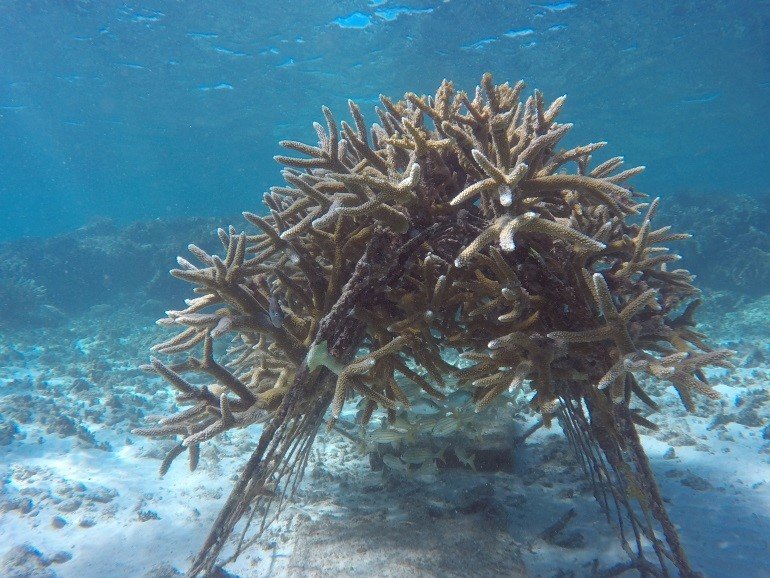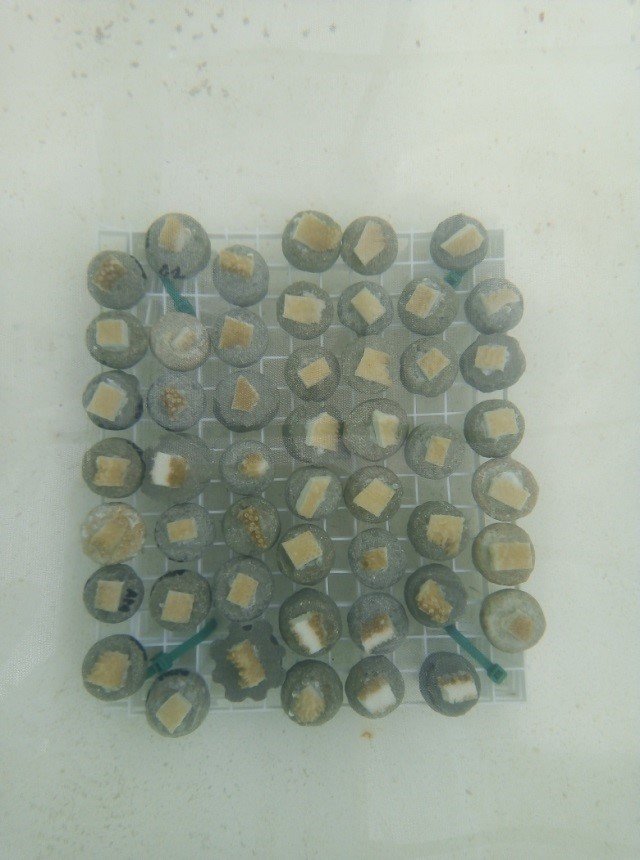By Rebecca Garcia / Toni Barletta | Project Leaders
We're excited to share that we have started coral restoration activities again, after being limited because of the pandemic situation. Over the last couple of months, we have been working on our infrastructures to optimize microfragmentation in order to obtain a higher rate of coral survival. Thanks to this, 101 microfragments were obtained from an in-water nursery; these were located in-situ because of the lack of personnel and the closure our Center for Marine Innovation due to government regulations to limit a further spread of COVID 19. These fragments of different species (Porites porites, Acropora spp., Pseudodiploria strigosa) where kept in-situ without any monitoring. These where cleaned to remove macroalgal cover, crustose coralline algae attached to the ceramic plates while in-situ which indicates a good substrate for coral attachment and overall low macroalgal cover.
The 22 coral nurseries located at the site Aquarium were monitored to evaluate the state of the 20 A-frame structure and 2 rope nurseries. These nurseries where monitored, dead fragments were removed to increase the growth rate of the fragments. Four A-frame structures were deployed in this site to start an experiment with the goal of knowing the exact coral cover of Acropora cervicornis that incentivizes the recruitment of fish in the nursery. For this experiment we have 4 old nurseries that have a high coral cover and fish biomass that will serve as a reference, 4 structures without corals that will serve as control, and 4 (still haven’t been deployed) structures with new fragments of A. cervicornis attached. Based on recurrent observations throughout one year in order to measure coral cover and fish biomass, we will be able to know the optimum coral cover needed to provide a habitat for fish. This data will also serve to know the number of coral fragments that can be removed for outplanting without compromising the agglomeration of fish.
A new nursery site, was evaluated to see the state of the four nurseries that were installed before the pandemic. Two of the structures are tree nurseries, which were never used before in the Puntacana region. These structures located in the new site have low algal cover and were able to withstand little to no monitoring due to COVID and tropical storms. This site is surrounded by a reef that will be used for coral outplants. In the near future a possible study could be implemented to evaluate the difference between fish biomass in coral nurseries in a Marine Protected Area (Aquarium) and a none proteted site.
Three species of massive corals (Montastraea cavernosa, Orbicella annularis, Pesudodiploria strigosa) and one branching coral (Acropora palmata) were taken from The Aquarium to the wetlab at our Center of Marine Innovation. The different colonies belonging to the same species were put in close contact in order to see if they were different genotypes via aggression experiments. From these experiments, nine different genotypes were detected. By having different genotypes a proportion of individuals in genetically diverse populations may have a greater capacity to survive and acclimate to changing environmental conditions. Genotypes also serve as a way to place microfragments of the same genotype together in order to accelerate growth rate for the fragments to fuse and cover a greater area which will serve to restore reefs.
Three tanks of the land nursery were reactivated as an initial stage with an approximate of 200 microfragments. The corals microfragmented were from the aggression experiments and staghorn corals of opportunity obtained from the Aquarium. These tanks have herbivorous marine species such as gastropods, sea urchins and doctor fish. This creates a more holistic ecosystem within each tank, which helps maintain a low microalga cover.
A new area for public outreach was designated to demonstrate the different structures that are used as nurseries in the Puntacana region. Tourist can come to the Center of Marine Innovation and be able to visualize how coral nurseries work and their purpose.
We're currently designing a workshop with the goal of teaching people how they can help with inland microfragmentation, nursery cleanups and coral outplants while using citizen science. This way more fieldwork will be able to be done and at the same time people from the community, former fishermen or tourists will be able to get involved and become coral gardeners as well.
Project reports on GlobalGiving are posted directly to globalgiving.org by Project Leaders as they are completed, generally every 3-4 months. To protect the integrity of these documents, GlobalGiving does not alter them; therefore you may find some language or formatting issues.
If you donate to this project or have donated to this project, you can receive an email when this project posts a report. You can also subscribe for reports without donating.
Support this important cause by creating a personalized fundraising page.
Start a Fundraiser


